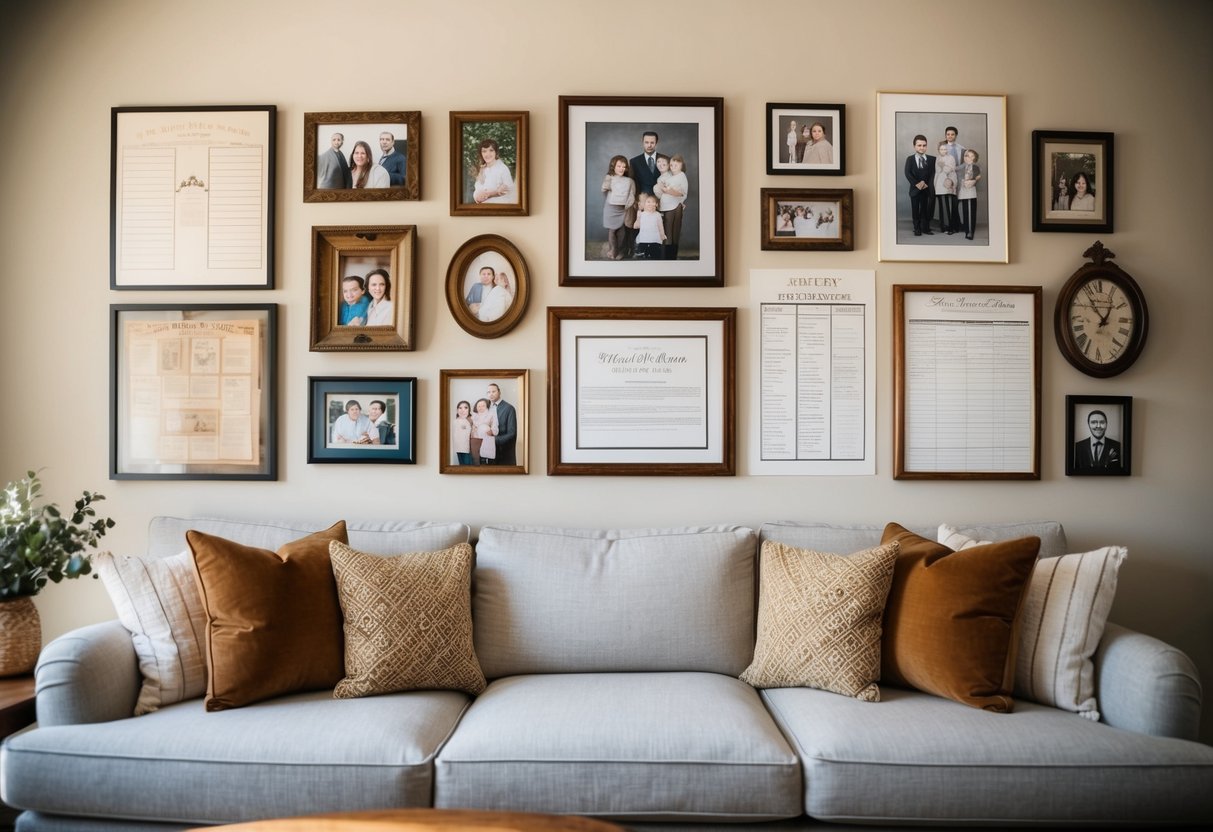Personalized Decor: Adding Family History to Walls
Setting a Theme with Historical Elements
Creating a cohesive theme using historical elements requires careful thought about which family stories to highlight. This could mean selecting specific family photographs, genealogical charts, or pieces of memorabilia that hold personal significance.
Include items that celebrate the cultural or historical backgrounds of family ancestors. This might be done by hanging maps depicting ancestral cities or displaying artifacts from family travels or traditions.
Balancing these historical elements with modern or existing decor ensures the overall space remains inviting and meaningful. Choosing items that serve as conversation starters can enrich not only the decor but also the lives of those encountering the space, fostering a deeper connection to family history.
Exploring Sources for Family History Decor

Incorporating family history into decor can be a meaningful way to personalize a home. Two distinct avenues for sourcing unique items include online marketplaces and local artisans, each offering varied access to custom pieces that reflect family narratives.
Utilizing Online Marketplaces like AliExpress
Online platforms such as AliExpress provide a wide array of options for customizing decor items with family history themes. Purchasers can find customizable wall art, tapestry prints, and photo frames that can be personalized with family names or photos.
AliExpress is praised for providing a range of price points, making it accessible for various budgets. Buyers can read reviews and examine ratings to ensure they select reliable sellers offering good quality products. While delivery might take time due to international shipping, the variety and customization features make it a viable source for those looking to enhance family history decor.
Discovering Local Artisans and Vendors
Local artisans and vendors offer personalized decor with a personal touch, often unavailable through larger retailers. They might create hand-painted family trees, custom wood carvings, or bespoke textile pieces that reflect specific family stories or heritage.
Engaging with local artists allows individuals to discuss their vision directly and adjust the specifics to match their decor style. This interaction can result in unique pieces with deep emotional value. Local markets or craft fairs are good places to find such artisans, providing opportunities to support small businesses while acquiring tailored family history decor.
Incorporating Coat of Arms into Your Design
The incorporation of a Coat of Arms into interior décor blends historical depth with aesthetic appeal. This approach can connect modern spaces with family history and culture through visual symbols.
History and Significance of Heraldry
Heraldry, being the practice of designing and displaying arms, emerged in medieval Europe. Originally used to identify knights in battle, these symbols evolved into representations of family lineage and social status. Each element in a Coat of Arms carries distinct symbolism and meaning—colors, shields, and figures combine to narrate family stories.
The historical significance of heraldry adds depth to personal spaces. When these ancient symbols are integrated into design, they serve as reminders of personal and family heritage, fostering a distinct sense of identity in any home. Present-day interpretations focus on maintaining these traditional connections while respecting historical accuracy.
Customizing Coat of Arms for Modern Interiors
Customizing a Coat of Arms for modern interiors blends tradition with contemporary style. This can involve tailoring colors or symbols for a more cohesive match with existing décor themes. Designing a unique wall piece or integrating it into textiles and furnishings are ways to reflect personal taste while honoring family heritage.
Emphasizing adaptability, creators can update designs to feature contemporary elements or align with current trends. Artistic techniques such as digital rendering and abstract interpretation are increasingly popular, allowing these symbols to complement modern aesthetics without losing their historical essence.



